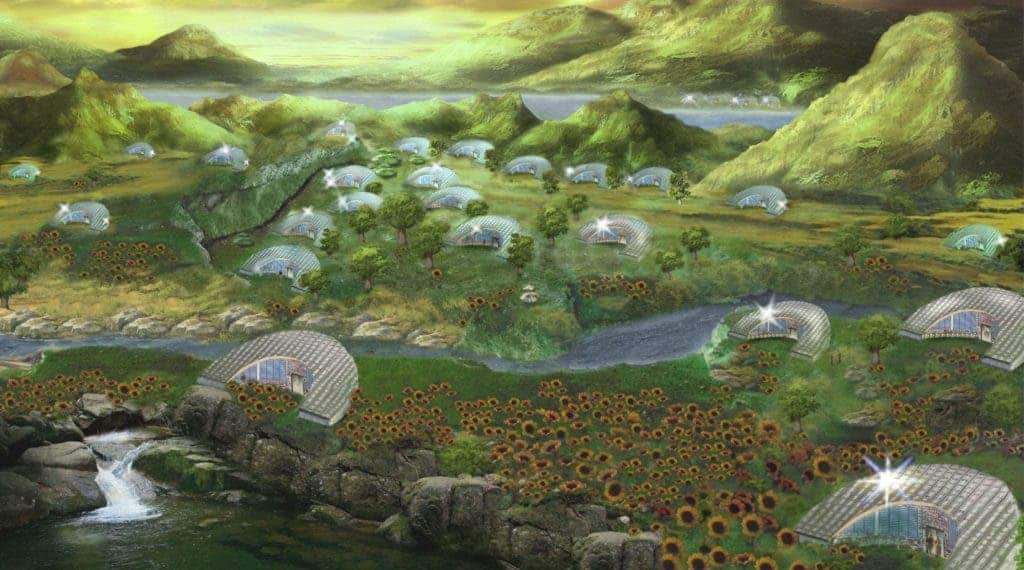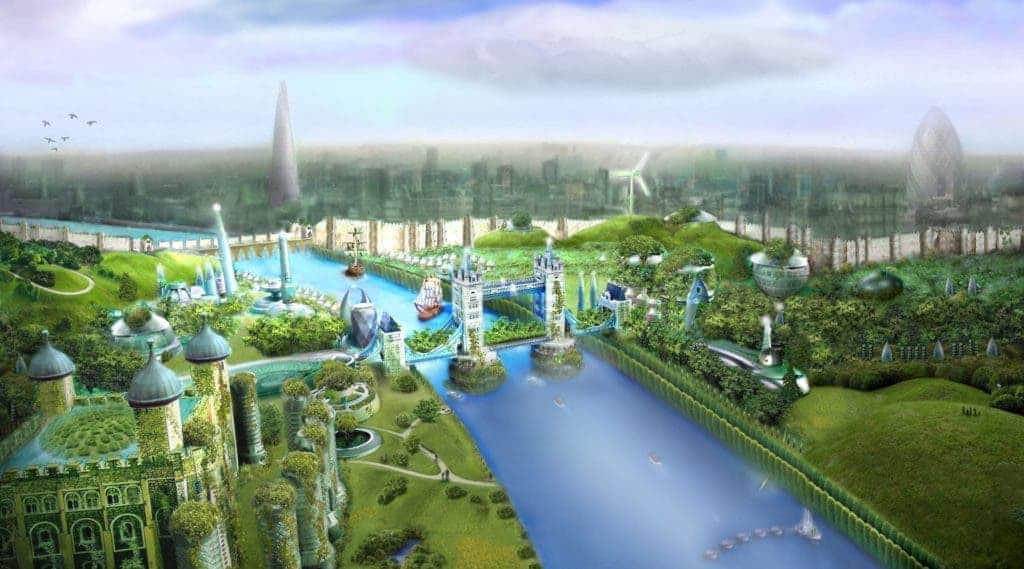
Adapt or die.
It’s a law that has governed life ever since it first sprang up on the face of the Earth. In many ways, we have managed to make ourselves exempt from it. We’ve out-hunted our predators. We’re no longer at the mercy of seasons for food. We can steel our bodies against disease and fix the parts that break down with time or injury.
The dramatic changes we’re ushering in on the planet, however, are a stark reminder that our fate is still weaved very deeply into that of the Earth. Environmental crises developing over the last decades show that working against nature, trying to twist it in our image, is a recipe for disaster. Our best bet, then, is to become an integral part of natural systems rather than replacing them with artificial ones.
Living within our means
One very eye-catching view of what this paradigm shift might look like comes from Ecotopia 2121. This project, the brainchild of Alan Marshall, an environmental social science professor at Mahidol University, Thailand, tries to imagine future cities that have adapted to fit their environments.
We wanted to know more about this green utopia, so we sat down with the professor to find out how one goes about imagining the cities of the future.

“The project started quite small some time in late 2012 as a classroom activity for my social studies Masters students, to get them to imagine their own city as a perfectly sustainable urban setting, and to get them to workout how it could transform into a ‘Green Utopia’,” Professor Marshall told me.
That day, he joined his students for the exercise and together they reinvented Alan’s hometown of Wellington, New Zealand. Their results, however, were quite good and they had fun working towards them, so the class decided to continue their project.
It started off with a small research group, the professor explained — one that aimed to pool the social study research work and artistic prowess of various years of students. By 2016, it had grown into a loose international collaboration. Alan tells me that his travels across the world (both for work and leisure) gave him ample inspiration.
“I drew on this ‘fieldwork’ to put my ideas, and the ideas of my Masters students, together into a few ‘social studies’ papers and presentations,” he recounts.
“Using contacts from previous ‘ecodesign’ projects across the world, including the fieldwork I conducted in the Transylvanian alps and across the Carpathian mountain countries, a number of designers from around the world also were intrigued by the idea of designing a ‘perfect’ eco-society, and they also sent in some ideas and sketches.”
Just like their surroundings, each city re-imagined for Ecotopia is unique. Adaptation meant they had to tailor themselves to varying conditions, creating the vast diversity seen in the project.
One hundred of these future cities were brought to life in artwork and through narratives that detail each city’s transformation into an eco-friendly utopia in the book Ecotopia 2121.
Are we there yet?

Change in Ecotopia came on through various channels: “sometimes through political revolution, sometimes through some quirky technological innovation, sometimes through gradual social awareness change, and sometimes through grave ecological tragedy,” says Marshall.
Hopefully, we’ll get there via some of the nicer routes instead of disaster, but the die is yet to be cast. What is encouraging, however, is that Ecotopia is more feasible than you’d initially suspect. The cities depicted in the project mostly use technology which is available today, with some bits and tricks which can be “forecast by anybody with an eye to the near-future,” Marshall told me.
“I’m pretty sure we do not need incredible leaps in technology to propel cities towards the Green Utopias of 2121,” he adds.
One of the most encouraging tidbits I’ve taken away from my bout of emails with the professor, however, is that the shift in our cities will also entail a change in our relationship with nature. The effort to adapt our cities won’t center around pleasing consumers, profit margins, and market-share. It won’t be about the security of military advantage, either.
It will be a collective expression of individual effort and desire to improve, and Marshall believes the “impetus must come from people”. Social agents of change abound in Ecotopia 2121 to reinforce this idea. Beyond just building cities, such a shift in mentality would become the best insurance of sustainability across all areas of human activity.
The project shows us a glimpse of a future where our collective effort — and collective involvement — carried the day. A future made possible by people working together for their own common good and the good of the planet at large. That’s quite an uplifting undertone of community to go with the bright artwork showcased in the project — one that I feel the concrete jungles of today deeply lack.
“Now, if you ask if these cities are proffered as ‘predictions’ or as ‘inspiring urban fantasies’, it’s a bit of both,” Alan confessed.
“Mostly, I believe if the world’s cities are to remain livable for the majority of citizens, then they will have to develop into the forms predicted in the Project. Or else they will grind to a halt through slow eco-collapse, economic decay, or some rapid large-scale disaster.”
On the flipside of the Green Utopias envisaged in the book stands Frankencities, an “evil sister” project that looks at how our cities will turn out in the worst case scenario. It “details the worst-case near-future scenarios for specific real-world cities so that we may graphically identify their risks and dangers” — the artwork is so good, though, that I’d totally visit these dystopian cities.
Ecotopia 2121 and Frankencities effecitvely show us how our communities could adapt to suit the future, and how our choices determine the end result. We can twist the world around us harder and cobble out sprawling Frankencities from the pieces, or we can laze in the sun like sunflowers in our Ecotopias.
The choice is in our hands. Impetus, after all, must come from ourselves.






